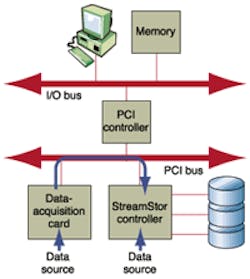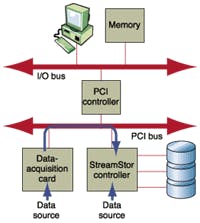Storage technique speeds astronomy-data recording
Radio astronomers use the very-long baseline interferometry (VLBI) technique to link radio telescopes around the world to create an Earth-sized interferometer. This produces the effect of one telescope as large as the Earth that can see astrophysical objects in better detail than any other available telescope.
The Massachusetts Institute of Technology Haystack Observatory (Westford, MA) has developed such a telescope, known as the Coordinated Millimeter VLBI array (CMVA). This telescope allows 3-mm VLBI observations of galactic and extragalactic sources using a worldwide array of millimeter-wave radio telescopes.
Prior to December 2000, data from this array were stored on magnetic tapes and shipped to a central facility for correlation. Last year, MIT approached Conduit Corp. (Longmont, CO; formerly Boulder Instruments) to develop a disk-based system for high data storage. Using the company's Conduit StreamStor PCI-816, a PCI-based real-time storage system, observatory engineers developed a system capable of a sustained 100-Mbyte/s data-recording rate and a 76-Mbyte/s playback rate. Based on this successful development, observatory engineers announced at last month's 2001 Vision Show East in Boston, MA, that they had signed an agreement with Conduit to develop a next-generation data-recording system using the company's 816XF board.
According to Thomas Skrobacz, Conduit vice president of business development, the new board provides a 64-bit, 66-MHz PCI interface and is capable of sustained recording and playback at speeds to 200 Mbytes/s. With this board, PC-based systems can be developed that transfer image data over the host 64-bit, 66-MHz bus or that can stream data to 16 external IDE drives via an on-board front panel data port (FPDP) interface.
"At present," says Skrobacz, "the board has been tested with 16 160-Gbyte drives from Maxtor (Milpitas, CA) and can sustain a maximum data recording rate of 200 Mbytes/s for approximately 3.5 hours." However, data transfers are limited to either the host or the FPDP. Skrobacz says the company is seriously considering implementing a Camera Link interface to the board early next year. "This Camera Link interface," he says, "would allow OEMs to develop inexpensive, high-speed PCI-based image-storage solutions."

